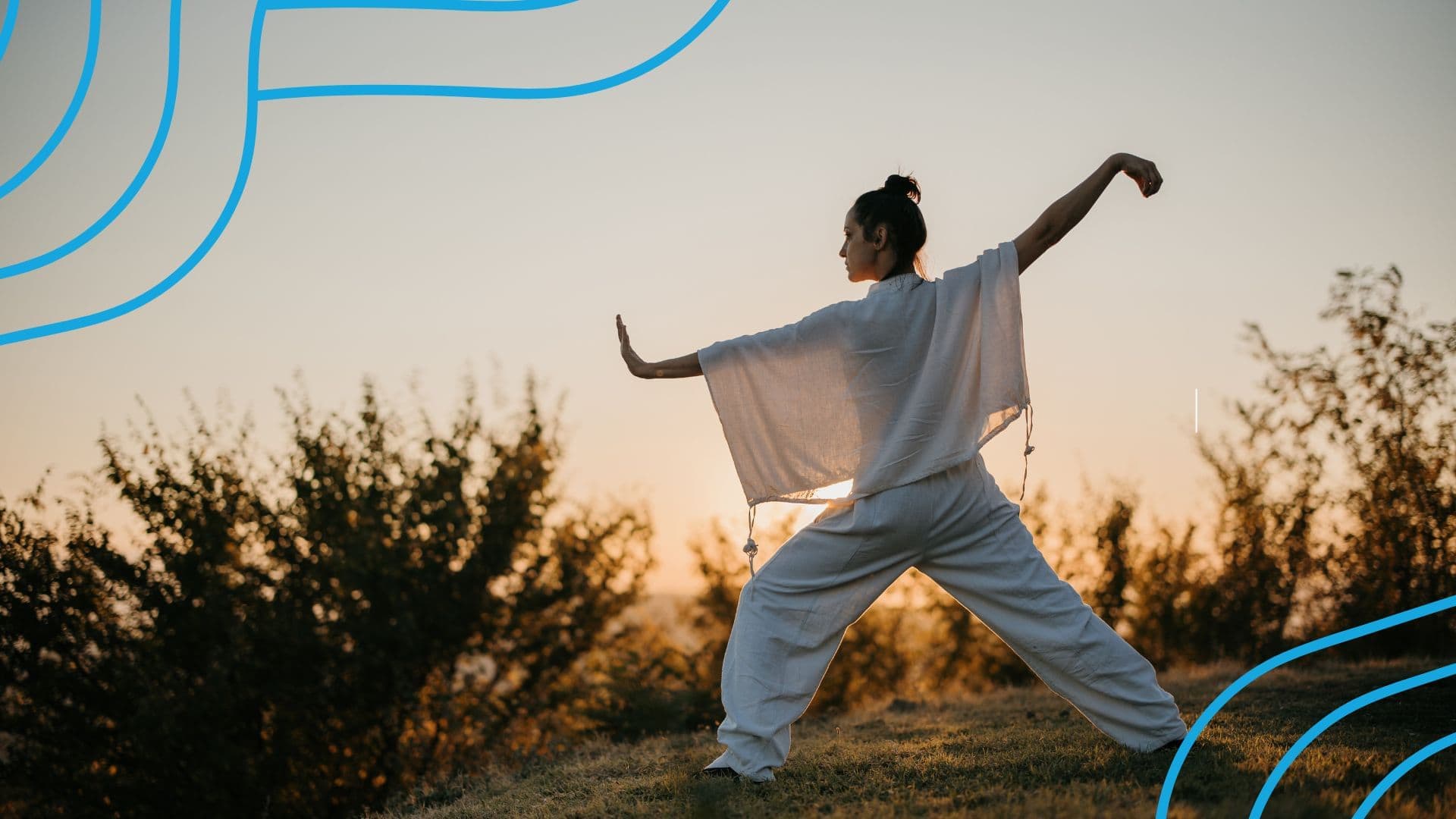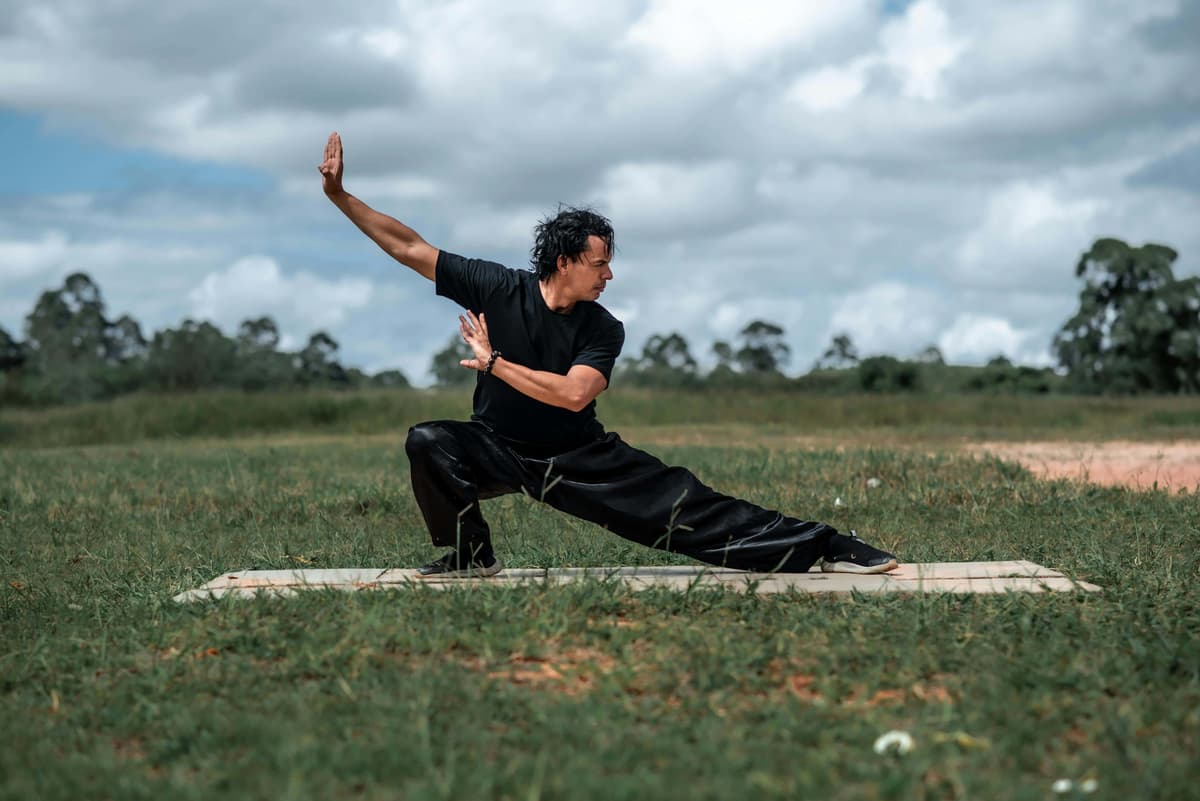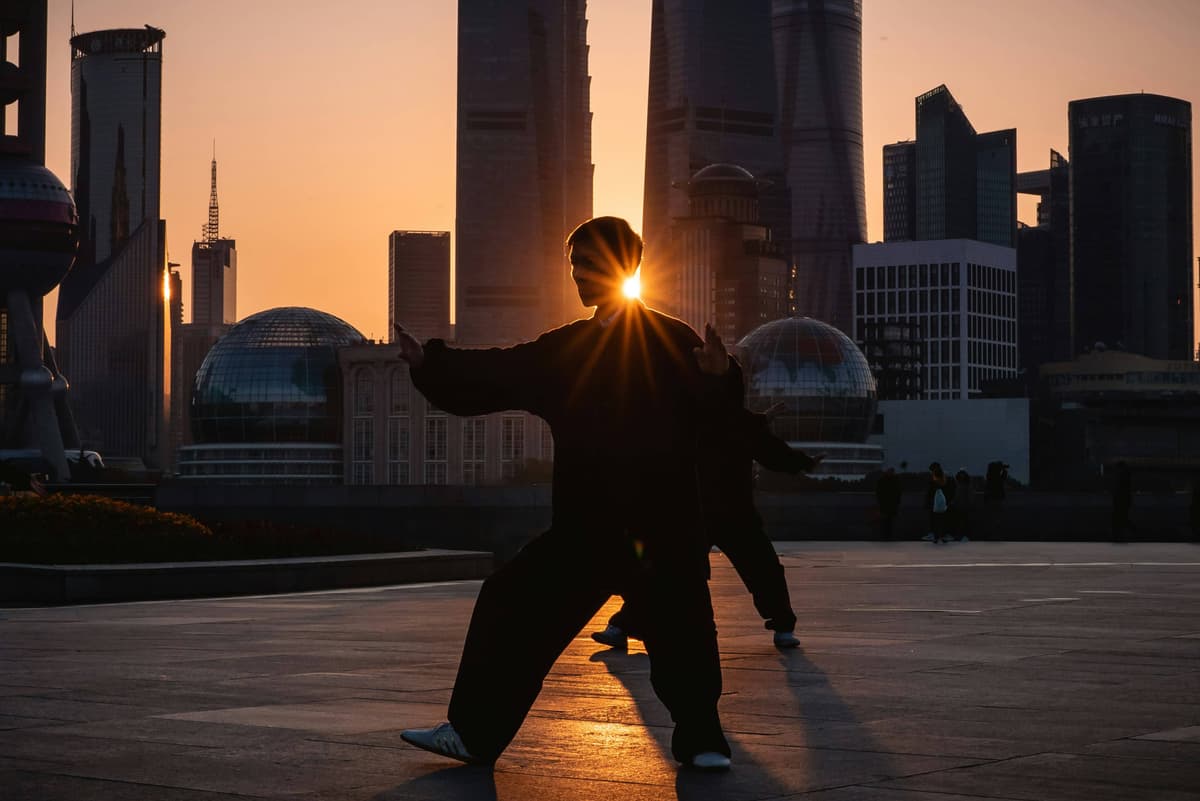
Tai Chi, also known as T’ai Chi, Taiji, or Tai Chi Chuan, is a traditional Chinese martial art that has evolved into a popular form of exercise and meditation worldwide. Originating in ancient China, Tai Chi is characterized by slow, flowing movements that emphasize balance, relaxation, and harmony. Its practice integrates elements of martial arts, philosophy, and traditional Chinese medicine, offering a holistic approach to physical and mental well-being.
At the heart of Tai Chi practice is the concept of Qi, pronounced “chee”, which refers to the vital energy that flows through the body according to Chinese philosophy. Practitioners believe that Tai Chi helps to cultivate and balance this Qi, promoting health and vitality. The slow, deliberate movements of Tai Chi encourage mindfulness and awareness of the body, allowing practitioners to connect with their inner selves and achieve a state of calmness and tranquility.
One of the distinguishing features of Tai Chi is its emphasis on softness overcoming hardness and the principle of yielding to overcome force. Through regular practice, individuals can improve their balance, flexibility, strength, and coordination while reducing stress and anxiety. Tai Chi is accessible to people of all ages and fitness levels, making it a popular choice for those seeking gentle exercise, rehabilitation from an injury, or a way to enhance overall well-being. Whether practiced for health, self-defense, or spiritual growth, Tai Chi offers a pathway to cultivate inner peace and harmony through fitness.

The history of Tai Chi is shrouded in legend and mythology, with its origins dating back centuries to ancient China. It is believed to have been developed by Taoist monks in the early 12th century at the sacred Wudang Mountain in Hubei province. There are many legends surrounding its origins, and one of them is that a Taoist monk named Zhang Sanfeng witnessed a fight between a snake and a crane, which inspired him to create a martial art that mimicked the fluid movements of these animals. Over time, Tai Chi evolved, incorporating elements of Taoist philosophy, traditional Chinese medicine, and martial arts techniques.
In the 17th century, Tai Chi gained popularity during the Ming Dynasty, particularly through the efforts of Chen Wangting, a martial artist from Chenjiagou village in Henan province. Chen Wangting synthesized various martial arts styles with Taoist principles to create what is now known as Chen-style Tai Chi. Subsequent generations of the Chen family further developed and refined the art, passing down their knowledge through oral tradition and secretive teachings of the practice.
As Tai Chi spread beyond the Chen family, different styles emerged, each with its own variations and interpretations of the original movements. These styles include Yang, Wu, Sun, and Hao, among others. Today, Tai Chi is practiced worldwide, not only as a martial art but also as a form of exercise, meditation, and stress management. Its rich history and deep philosophical roots continue to attract practitioners seeking physical, mental, and spiritual well-being through this ancient Chinese practice.
Tai Chi has branched into several distinct styles, each with its own unique characteristics and emphasis. One of the most widely practiced styles is the Yang style, which was developed by Yang Luchan in the 19th century. Yang-style Tai Chi is known for its graceful, flowing movements and relaxed, expansive postures. It emphasizes gentle, circular motions and is particularly popular among beginners and older adults due to its accessibility and low-impact nature.
In contrast, Chen-style Tai Chi is considered the original style from which all others derive. Developed by the Chen family in Chenjiagou village, Henan province, Chen-style Tai Chi features a combination of slow, soft movements with explosive bursts of energy known as fajin. It incorporates complex footwork, vigorous movements, and dynamic tempo changes, making it suitable for practitioners seeking both health benefits and martial prowess.
Another prominent style is the Wu style, founded by Wu Quanyou and later refined by his son, Wu Jianquan, in the late 19th and early 20th centuries. Wu-style Tai Chi is characterized by compact, precise movements and a higher stance compared to other styles. It emphasizes internal energy cultivation and relaxation, making it suitable for individuals of all ages and physical abilities.
The Sun style of Tai Chi was created by Sun Lutang in the early 20th century. It combines elements of Tai Chi, Xingyi, and Bagua, three internal martial arts, into a unique and streamlined practice. Sun-style Tai Chi incorporates smaller, more compact movements and is particularly known for its emphasis on agility, speed, and smooth transitions between postures.
Finally, the Hao style of Tai Chi, founded by Hao Weizhen in the mid-19th century, is characterized by its precise, small-frame movements and deep, rooted stances. Hao-style Tai Chi emphasizes internal energy circulation, relaxation, and martial effectiveness. Although less widely practiced compared to other styles, it is highly respected for its focus on internal principles and subtle body mechanics. Overall, the diverse range of Tai Chi styles offers practitioners various avenues to explore and deepen their understanding of this ancient art form.

Tai Chi offers a myriad of health benefits for both the body and mind, which contribute to its widespread popularity as a form of exercise and meditation. One of the primary health benefits of Tai Chi is its ability to improve balance and reduce the risk of falls, particularly in older adults. The slow, controlled movements and shifting of weight in Tai Chi help to strengthen muscles, enhance proprioception, and improve coordination, leading to better stability and decreased fall risk.
Tai Chi is renowned for its stress-reducing properties and its ability to promote relaxation and mental well-being. The meditative aspects of Tai Chi, such as deep breathing and mindfulness, can help alleviate symptoms of anxiety, depression, and chronic stress. Regular practice of Tai Chi has been shown to lower levels of cortisol, the stress hormone while increasing feelings of calmness and emotional resilience.
Tai Chi also offers cardiovascular benefits, despite its gentle and low-impact nature. Research has demonstrated that Tai Chi can improve cardiovascular fitness, lower blood pressure, and reduce cholesterol levels. The combination of slow, rhythmic movements and deep breathing promotes circulation, enhances oxygen uptake, and strengthens the heart, leading to better cardiovascular health overall.
Moreover, Tai Chi has been shown to alleviate chronic pain conditions, such as arthritis, fibromyalgia, and lower back pain. The gentle stretching and range-of-motion exercises in Tai Chi can help reduce stiffness, improve joint mobility, and alleviate muscle tension, leading to decreased pain and improved quality of life for individuals with chronic pain conditions. Overall, Tai Chi offers a holistic approach to health and wellness, addressing both physical and mental aspects of well-being. Its gentle, accessible nature makes it suitable for people of all ages and fitness levels, making it a valuable tool for promoting lifelong health and vitality.

Tai Chi movements are often performed in a sequence of forms, with an emphasis on relaxation, alignment, and fluidity. While Tai Chi has self-defense applications, it is also widely practiced for its health benefits, including improved balance, flexibility, strength, and stress reduction.
Qigong, on the other hand, is a Chinese system of exercises and meditation designed to solely cultivate and balance vital energy within the body. Qigong encompasses a wide range of practices, including gentle movements, breathing exercises, and meditation techniques. Unlike Tai Chi, which has a martial arts origin, Qigong primarily focuses on health maintenance, healing, and spiritual development. Qigong exercises are often simpler and more repetitive compared to Tai Chi, with an emphasis on relaxation, breath control, and energy flow. Qigong is practiced to enhance overall well-being, boost immunity, relieve stress, and promote longevity.
Yoga originated in ancient India and is a holistic system of physical, mental, and spiritual practices aimed at achieving harmony and balance. Yoga encompasses a variety of techniques, including physical postures (asanas), breathing exercises (pranayama), meditation, and ethical principles (yamas and niyamas). While there are many different styles of yoga, ranging from vigorous and dynamic practices like Ashtanga and Vinyasa to gentle and restorative practices like Hatha and Yin, all forms of yoga emphasize the union of mind, body, and spirit. Yoga is practiced to improve flexibility, strength, concentration, and emotional well-being, as well as to cultivate self-awareness and inner peace.
Tai Chi, Qigong, and Yoga share some common principles such as mindfulness, breath awareness, and mind-body integration, but they also have distinct differences in terms of origin, techniques, and focus. Tai Chi emphasizes slow, flowing movements and martial arts principles, Qigong focuses on cultivating and balancing Qi through gentle exercises and meditation, and Yoga encompasses a holistic approach to well-being through physical postures, breathing techniques, and spiritual practices. Each of these ancient practices offers unique benefits for enhancing health, vitality, and inner harmony.
Tai Chi is a practice that is accessible to virtually anyone, regardless of age, fitness level, or physical ability. Its gentle, low-impact movements make it suitable for people of all ages, from children to seniors. Whether you’re a seasoned athlete looking to improve balance and coordination, or someone recovering from injury or managing a chronic health condition, Tai Chi can be adapted to meet your individual needs and limitations. Many Tai Chi instructors offer modified exercises and variations to accommodate different levels of mobility and flexibility. Additionally, Tai Chi can be practiced indoors or outdoors, alone or in a group setting, making it a versatile and inclusive activity for anyone seeking to improve their physical and mental well-being.
Anyone, regardless of background or experience, can benefit from the practice of Tai Chi. Whether you’re looking to enhance your physical fitness, reduce stress, improve mental clarity, or simply connect with your body and breath, Tai Chi offers something for everyone. Whether you’re young or old, fit or sedentary, experienced or novice, Tai Chi welcomes all who seek to cultivate inner peace, balance, and harmony in their lives. Enjoy your journey into the world of Tai Chi!

Pilates is focused on enhancing core strength, crucial for overall torso stability and fluid movement. The core, influencing both legs and upper body, is essential for everyday comfort, such as sitting and standing without pain. The aim is to move gracefully through balanced muscle development, addressing potential weaknesses and promoting full joint mobility. The workout …

Rocky Mountain spotted fever (RMSF) is a bacterial infection caused by Rickettsia rickettsii and transmitted through the bite of an infected tick. This infection is characterized by the sudden onset of fever, headache, and rash, which can be life-threatening if not treated promptly. This infection was first identified in 1896 in the Snake River Valley …

COVID-19 has faded from the public conversation, but it is still as prevalent as ever, with wastewater levels in 2024 approaching those seen at the beginning of the pandemic in 2020. Furthermore, as COVID-19 has become less of a hot topic, many of the resources that made COVID-19 vaccines free or cheap have dried up …